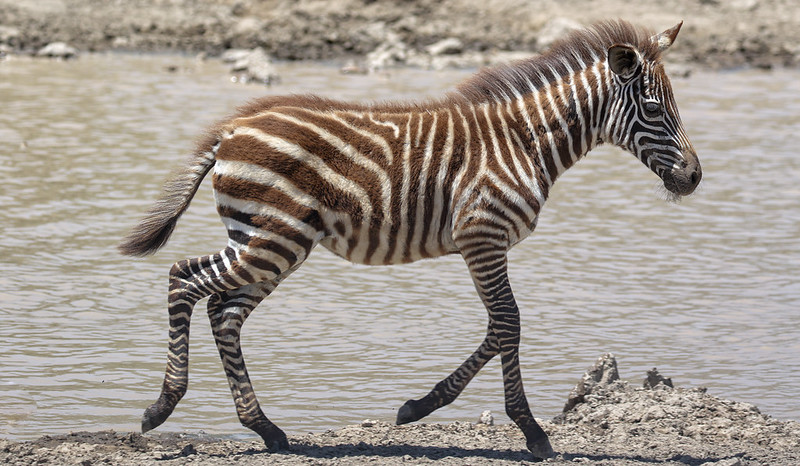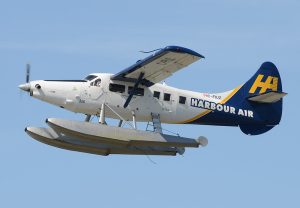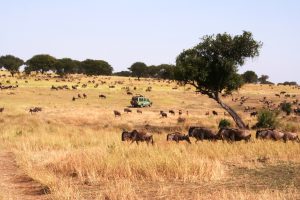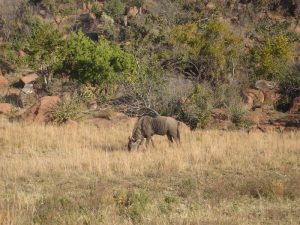Ngorongoro Conservation Area
The Ngorongoro conservation area is the small-scale version of the famous Serengeti national Park The park is a habitat for the thickest population of large animals like black rhinos, elephants, buffaloes and so forth. The visitors who have visited Ngorongoro conservancy call it the eighth wonder of the world. This is because it’s the world’s prevalent integral volcanic caldera which isn’t under water. The Ngorongoro crater is 10 miles wide with walls that stretch about 2000 feet into the East African Skies; like a world of its own. This includes all the ecosystem that you find in the Serengeti National park in one small place.
Ngorongoro Crater
The Ngorongoro crater is the eighth wonder of the world. Its habitant attracts the big five of Africa that is the rhinos, lions, elephants, leopards and buffaloes.
Wildlife
Ngorongoro Conservation Area is the easiest place in Africa to spot all the big five in one spot. The crater rim attracts thousands of wildebeest that migrate to the park whenever faced with a dry spell. Examples of other wildlife to see in thousands are blue wildebeest, gazelles, zebras, giraffes, impala, hartebeest and kudu.
On top of that is a variety of other wildlife like, Leopards and Buffaloes. Other animals like giraffes, hippos, wildebeests, zebras, antelopes, different types of monkeys and so much more.
Bird Life
Ngorongoro Conservation Area is an amazing bird watching site with 500 recorded bird species. Lake Makatare waters are home to thousands of migratory flamingoes and the swamps are the spots to look for hippos wallowing in the cool mud. Examples of bird species like Tawny Eagle, Red & Yellow Barbet, Red Bellied Parrot, Ashy Starling, African Grey Flycatcher, Ostrich, Pink Breasted Lark, Northern White Crowned Shrike, Great White Pelican and Donaldson Smith’s Nightjar.
Activities in Ngorongoro Conservation Area
Game Drives
The game drives start early in the morning at 06:00am and afternoon session at 1:00 pm. They are conducted in open roof top vehicles of 4×4 and open sided vehicles to enable you take great pictures during your safari. You will see animals ranging from Elephants, Lions, Black Rhinos, Buffaloes ,African hunting Dog, Spotted Hyenas, Bat Eared Fox, large herds of antelopes, Zebras, Thompson’s giant gazelles and the rare tree climbing lions.
Other animals like bush babies, civets, Aardvarks, leopards, dik diks, bat eared fox, scrub hare, jackals and mongoose.
Bird Watching
Ngorongoro Conservation Area is known for its beautiful ecosystem that attracts a variety of bird species. The park offers huge numbers of birds with over 500 species which are sighted along Lake Makatare waters. This lake is a home to thousands of flamingoes and other water birds. The best months for bird watching during November to July although you can see them thorough tout the year
Nature Walks
Ngorongoro Conservation Area offers you a chance to move out of your vehicle and stretch your legs for either a short or long walk during your safari. These walks are conducted by the park rangers either inside or outside the park during day time.
Where to stay in Ngorongoro Conservation Area
There are a number of places to stay while on your Ngorongoro Conservation Area trip which ranges from Budget, Midrange to Luxury accommodation. Budget accommodation ranges from $30-$150, Midrange from $200- $250 and Luxury from $300-$1000.
Luxury
- Ngorongoro Serena safari lodge
- Manyara wildlife safari camp
- Lake Manyara wildlife lodge
- Ganako luxury lodge
- Acacia farm lodge
- Ndutu Safari Lodge
Midrange
- Ngorongoro Rhino lodge
- Gibbs’s farm
- Ngorongoro Sopa lodge
- Octagon safari lodge
- Ngorongoro wildlife lodge
Budget
- Kifaru Lodge
- Eunoto Retreat
- Bougainvillea Safari Lodge
How to get to Ngorongoro Conservation Area
You reach Ngorongoro Conservation Area through Arusha town and it takes approximately 2 hours and below are the different transportation ways;
By Road
This is the most common type of transportation to the park and it will take you approximately 2 hours from Arusha town or Ngorongoro as you get to do more of sightseeing.
The roads are in good condition but as you get closer to the Game Reserve, the roads are Marram and you may experience the African Massage. We recommend you use a 4×4 Vehicle and this ranges from Us dollars $200-$350 per day minus drivers’ allowance.
By Air
The air transportation is scheduled or chartered from either Serengeti, Arusha and Lake Manyara. Below are the companies that operated the Lake Ngorongoro Conservation Area route;
- Coastal Aviation flies to Ngorongoro Conservation Area
- Air Tanzania flies to Kilimanjaro
- Zan Air flies to Arusha
- Precision Air flies to Arusha and Kilimanjaro
Best time of the year to visit Ngorongoro Conservation Area




